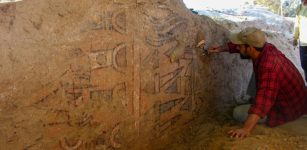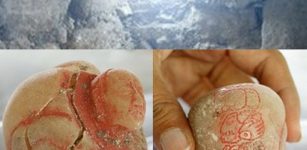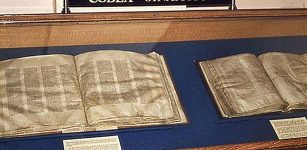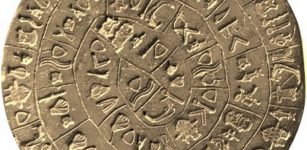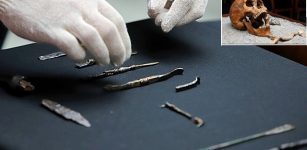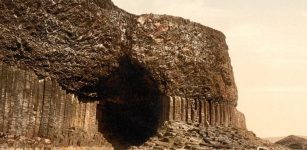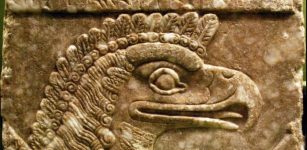Yet Another Beautiful Roman Mosaic In Hatay, Turkey
Conny Waters - AncientPages.com - During routine construction works in the Defne district of southern Turkey's Hatay, workers accidentally discovered the remains of a Roman villa and a mosaic floor covered with a geometric pattern.
A worker cleans the mosaic on the floor of a recently discovered Roman villa in the Defne district of Hatay, southern Turkey, July 4, 2022. (AA Photo)
It is not the first time a beautiful mosaic was accidentally unearthed in Hatay (Antiochia, during the Roman Empire.)
Hatay is known for its Roman-era mosaics dating back to the second and third centuries BC.
One of the most prominent landmarks of Hatay is the world's second-largest collection of Roman mosaics, which can be admired in the Hatay Archaeology Museum at Antakya.
"Floor mosaics and wall remains of a Roman villa were unearthed. Based on the ruins and small finds, we determined that this place was inhabited until the 2nd and 5th centuries," said Ayşe Ersoy, director of Hatay Archeology Museum, told Anadolu Agency (AA), as cited by Daily Sabah.
"Antiochia was settled in a large area between the Orontes River and the Habib-i Neccar Mountains… Its area of spread is very wide. The road of Antiochia, which starts from the Aleppo gate, goes up to the Defne gate, and there are settlements along the way. This is a villa and ruins from that period."
Ersoy also added that during the excavations, the archaeologists found that some of the remains of the villa walls and some of the floor mosaics were damaged.
The excavation works are unfortunately very limited due to the presence of multistorey buildings in the area.
The mosaic on the floor of a recently discovered Roman villa in the Defne district of Hatay, southern Turkey, July 4, 2022. (AA Photo)
"In the coming days, we will begin drilling in the adjacent parcel to determine whether the area of historical remains is larger and we will present the matter to the conservation committee. Then, it will be decided whether the artifacts will be moved."
A few years ago, another beautiful mosaic was accidentally unearthed during construction works near the ancient city of Antioch.
The 'Skeleton Mosaic' mosaic belonged to the dining room of a house from the 3rd century BC.
This glass artwork shows 2,400-year-old scenes, including a skeleton lying down with a jorum in his hand and a wine pitcher and bread on the side. The words, written in Greek and depicted on this fragment of the mosaic are: “be cheerful, live your life.”
The mosaic, called the "skeleton mosaic," belonged to the dining room of a house from the 3rd century B.C., as new findings have been unearthed in the ancient city of Antiocheia. Credits: AA Photo
Turkey's Hatay Province has a long history and has hosted many civilizations.
Settled since the early Bronze Age, Hatay was once part of the Akkadian Empire, then of the Amorite Kingdom of Yamhad. Subsequently, it became part of the Kingdom of Mitanni, then the area was ruled by a succession of Hittites and Neo-Hittite peoples. This region of Turkey came under the control of Assyrians, the Neo-Babylonians, and the Persians. It was also the center of the Hellenistic Seleucid empire.
Finally, from 64 BC onwards, the city of Antioch (Antiochia) in Hatay Province became an important regional center of the Roman Empire. It represented the third-largest city (after Rome and Constantinople) in the number of inhabitants.
Antioch was once a very important and wealthy city with mints and mosaic schools in which artisans created world-class mosaics still famous today.
Written by Conny Waters - AncientPages.com Staff Writer





